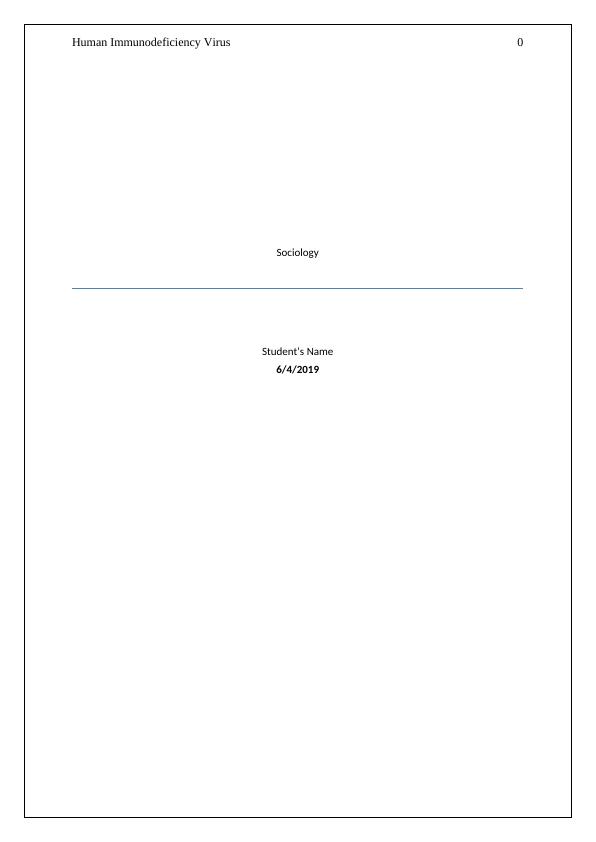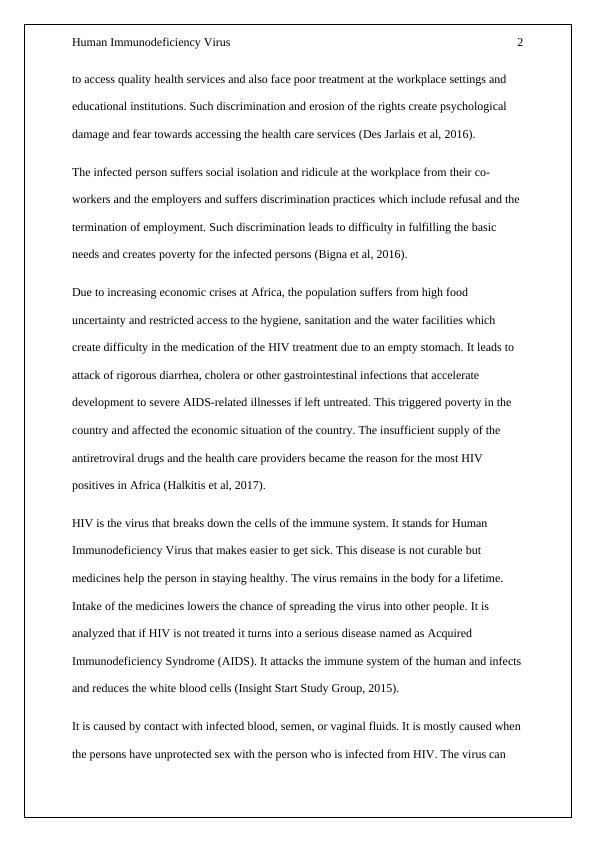Human Immunodeficiency Virus
Added on 2023-03-30
8 Pages1965 Words190 Views
End of preview
Want to access all the pages? Upload your documents or become a member.
Impact of Social Determinants of Health on Women in Two Different Countries
|9
|624
|122
Impacts of HIV/AIDS on Individuals, Families and Community in Australia
|13
|3413
|379
HIV Care Intervention in Low and Middle-Income Nations
|11
|3462
|89
Impact of Discrimination and Living Environment on MSM Health in Australia and China
|11
|3023
|284
HIV Research with Men who Have Sex with Men (MSM): Advantages and Challenges of Different Methods for Most Appropriately Targeting a Key Population
|10
|2753
|74
Comparison of HIV/AIDS Affecting Sex Worker sin USA and South Africa
|9
|2041
|34



